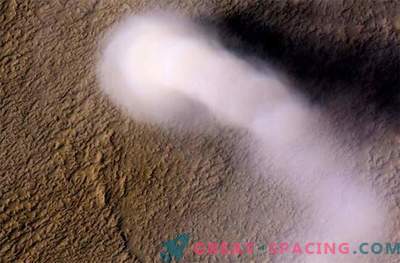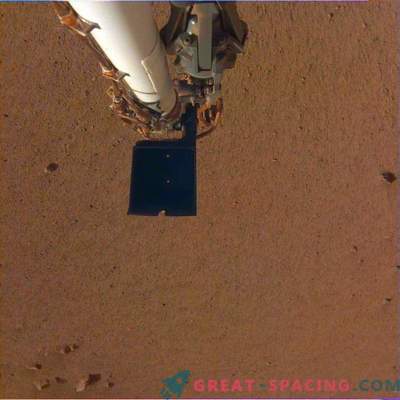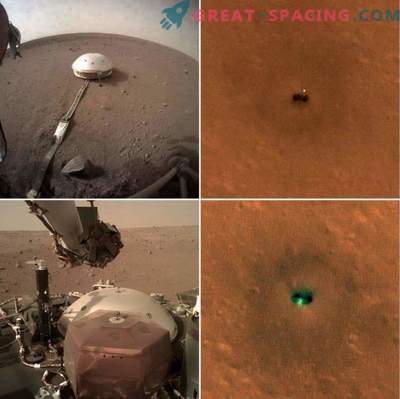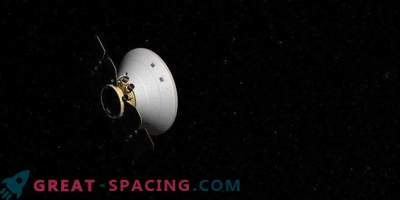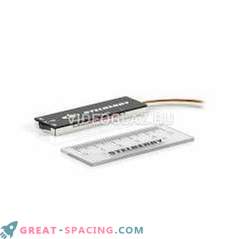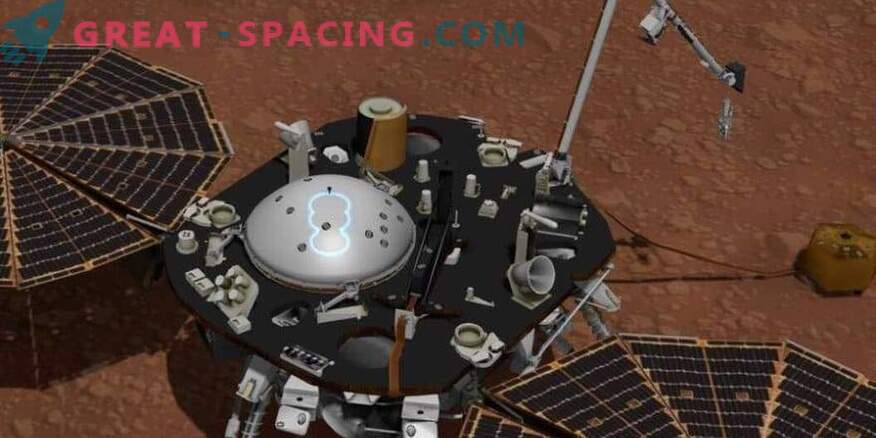
A frame from the landing pad. InSight demonstrates a dashboard with a seismometer cover above the pressure sensor input. As a result, the metal screen will be placed above the seismometer on the surface of Mars
The new Martian intelligence officer InSight is not yet ready to study the inside of the Red Planet, but already now it records everything that happens on the surface and in the atmosphere. The device deploys a meteorological package for monitoring weather on Mars.
InSight landed on the surface of Mars on November 26th. Since then, the device has been carefully analyzing the environment and setting up sensitive instruments. The seismometer is still on the deck of the ship, measuring the vibrations of the InSight, and not the planets. Also, a heat-sensitive probe is not used. But the meteorological complex is already preparing to calculate the pressure, temperature and the creation of three-dimensional models of wind.
This set includes a pressure sensor, which made it possible to record howling of the Martian wind, penetrating through the instrument panel and the protective cover of the seismometer. When the sensors are installed at selected positions, they will play an important role in the measurement of atmospheric “noise”, which should be removed from the seismometer readings. Thus, it will be possible to obtain first-class measurements of weather conditions on the surface of Mars. Under terrestrial conditions, changes in pressure portend a change in weather systems. Martian pressure is lower than Earth pressure, but the effect repeats. The planet has seasons, as well as high and low pressure systems.
Although the InSight landing pad is in a place where pressure systems are less intense, the instruments are endowed with sufficient sensitivity to capture the slightest changes. Right now he manages to get testimonies of dusty devils and whirlwinds that appear when sunlight heats the surface. The pressure transducer should pick up the infrasound — low-frequency sound waves propagating through the air due to various atmospheric phenomena.
But there are more exciting events to review. If the meteor is in the Martian atmosphere near the landing site, then you can fix the shock wave. The TWINS instrument studies temperature and wind. He put forward two long arrows directed in different directions. Each has a small heated matrix with sensors that determine heat loss and wind direction. Calibrations change places all the time, so TWINS gradually acquires the ability to measure wind throughout the day and night. Now data is available only for daytime. Round-the-clock monitoring is an important achievement, because before there was a limit on the amount of data, as they measured only 10-15 minutes every hour or two. In the remaining intervals, the devices were simply turned off.
It is important to understand the nature of Martian meteorology. If the weather and climate of the Earth are affected by water and humidity in the clouds, then Mars is a hostage of dust storms that reflect sunlight and trap radiation. InSight weather measurements will be complemented by data from the Curiosity rover, which will allow you to accurately understand how low and high pressure systems move around the planet.
